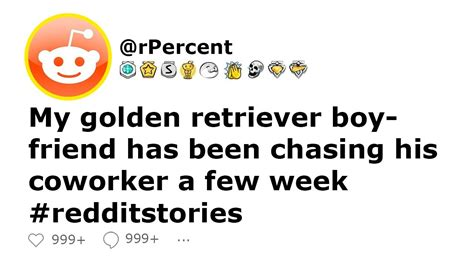Discover the reasons behind your Golden Retriever's chasing behavior and learn effective strategies to manage it. Gain insights into dog communication and when to seek professional help.
It was a sunny afternoon at the dog park when I noticed my Golden Retriever, Max, suddenly take off in a sprint. His target? Another Golden Retriever who happened to be his "coworker" at the local therapy dog program. As I watched them race around the park, I couldn't help but chuckle at the sight of my furry boyfriend engaging in what appeared to be a playful chase with his canine colleague.
However, as a responsible dog owner, I knew that I needed to understand the reasons behind Max's behavior and ensure that it was indeed just a harmless game.
The Nature of Chasing Behavior in Dogs
As a long-time dog lover and owner, I have come to learn that chasing is a natural instinct for many dogs. It stems from their ancestral past as hunters and herders. Even though Max is a Golden Retriever, a breed known for its friendly and gentle nature, he still possesses these instinctual drives.
In my opinion, chasing behavior in dogs is not inherently problematic. It becomes an issue only when it leads to aggressive interactions or puts the dog or others in danger. As long as the chase is playful and both dogs are enjoying the interaction, there's no cause for concern.

Understanding the Reasons Behind the Chase
According to a study published in the Journal of Veterinary Behavior, there are several reasons why dogs engage in chasing behavior:
- Playfulness: Dogs often chase each other as a form of play, exercise, and socialization.
- Herding Instincts: Some breeds, like Golden Retrievers, may exhibit herding-like behaviors due to their working dog heritage.
- Prey Drive: Dogs with a strong prey drive may chase moving objects or animals out of instinct.
- Curiosity: Dogs are naturally curious creatures and may chase other animals to explore their environment.
In Max's case, I believe his chasing behavior was primarily driven by playfulness and curiosity. As a therapy dog, he is well-socialized and enjoys interacting with other dogs. The chase was likely his way of initiating play with his coworker.
Managing Chasing Behavior: Tips and Strategies
While Max's chasing behavior was harmless, it's important for dog owners to know how to manage and modify this behavior if necessary. Here are some practical tips:
- Consistent Training: Teach your dog commands like "come," "stay," and "leave it" to redirect their attention away from the chase.
- Socialization: Ensure your dog is well-socialized from a young age to promote positive interactions with other animals.
- Exercise: Provide ample physical and mental stimulation to reduce excess energy that may contribute to chasing.
- Supervision: Always supervise interactions between your dog and other animals, especially if chasing is a concern.
- Leash Training: Keep your dog on a leash when outdoors if there's a risk of them chasing after other animals or entering unsafe areas.
Recognizing Canine Communication
During my years of working with dogs, I've learned the importance of understanding canine communication. Dogs use body language and vocalizations to express themselves, and chasing can be a part of this communication.
When observing Max and his coworker, I looked for signs of playfulness such as wagging tails, play bows, and relaxed body postures. Their barking was high-pitched and accompanied by playful gestures, indicating that the chase was indeed friendly.
When to Seek Professional Help
While Max's chasing behavior was harmless, there are situations where professional help may be necessary. If your dog's chasing leads to aggressive behavior or poses safety risks, it's crucial to consult with a professional dog trainer or animal behaviorist.
Organizations like the Association of Professional Dog Trainers (APDT) can help you find a qualified trainer in your area. They offer a directory of certified professionals who can provide personalized guidance based on your dog's specific needs and temperament.
Conclusion
Watching Max chase his coworker at the dog park reminded me of the importance of understanding and managing dog behavior. As a Golden Retriever owner, I've learned that chasing is a natural instinct for many dogs, but it's our responsibility to ensure that it remains a harmless and enjoyable activity.
By implementing training techniques, providing adequate exercise, and supervising interactions, we can help our furry friends engage in healthy play while keeping everyone safe. Remember, patience and consistency are key in modifying any unwanted behavior in dogs.
So, the next time you see your Golden Retriever chasing their canine "coworker," take a moment to appreciate the playful nature of dogs and the bond they share. With the right knowledge and approach, you can ensure that your furry boyfriend's chasing behavior remains a delightful part of their social interactions.
